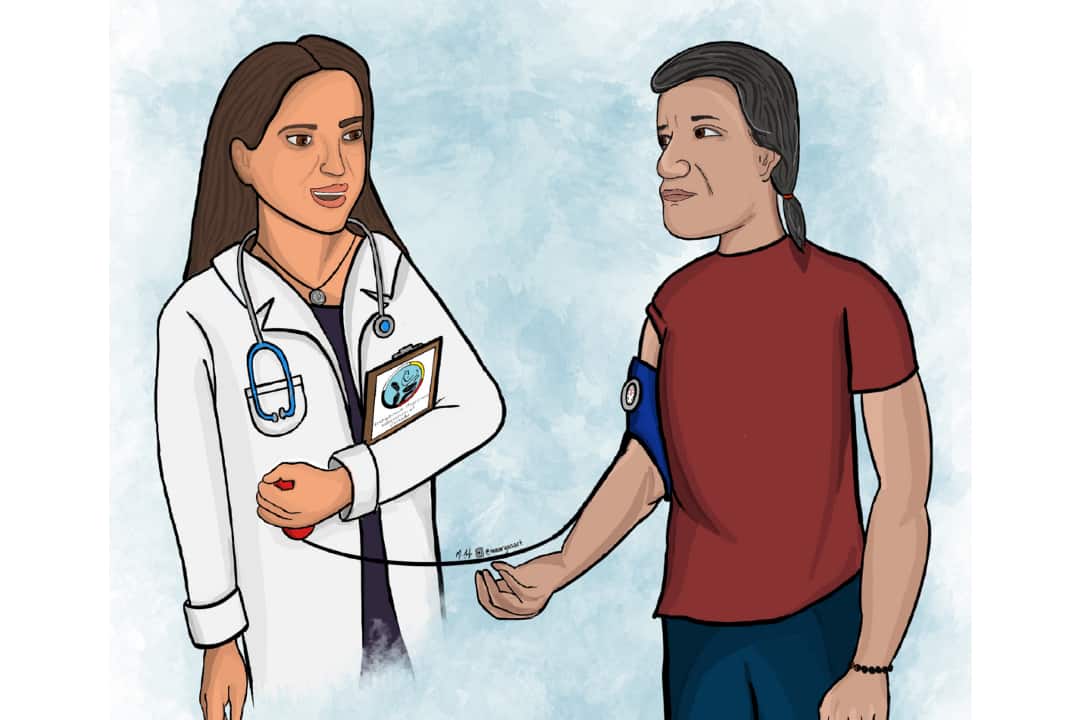As the COVID-19 pandemic continues, data collected by Toronto Public Health reveals higher rates of infection and hospitalization among low-income households, racialized groups, and immigrants.
The impact on Indigenous communities has been particularly concerning. In July, a Change.org petition co-run by Dr. Anna Banerji of the Department of Medicine called for the federal government to supply greater resources to Indigenous communities. This petition gathered over 50,000 signatures.
Dr. Kwame McKenzie, a physician and professor in the Department of Psychiatry at U of T, spoke to The Varsity at length on the pitfalls of a “one size fits all” pandemic response and the dangers of not collecting more granular data. “One of [the] things you do in a democracy is you count things, and if you’re not counted, you basically don’t count,” McKenzie said.
The challenge of data collection
While the province of Ontario has announced it will start collecting race-based data, that in itself is not a solution. In May, the Yellowhead Institute, a Ryerson-based Indigenous think tank, released a report highlighting the lack of data collection for Indigenous communities.
The report mentions how Yellowhead researchers were able to verify more Indigenous COVID-19 cases — by combing through obituaries and local reports — than were previously known due to a lack of any public agency “reliably recording and releasing [COVID-19] data that indicates whether or not a person is Indigenous.”
Dr. Michael Anderson, an Indigenous physician and a member of the Tyendinaga Mohawk Territory, Dalla Lana School of Public Health, and Waakebiness-Bryce Institute for Indigenous Health, explains the colonial roots of Indigenous peoples’ fear to self-identify as who they are. Because the health care system is built on racism and discrimination, it can be challenging to trust, and thus, generating accurate statistics becomes an issue, even during a pandemic.
Anderson noted that “when Indigenous people migrate into an urban centre so the health care institution is four metres away, their access gets worse not better.” This is because systemic racism acts as a barrier to getting treatment. Without adequate records on who is Indigenous, resources cannot reach those most in need.
“There’s efforts underway to try to change that, but that’s sort of in its infancy,” Anderson said. He further highlighted that there is a fleeting responsibility to pay for Indigenous health care among the three levels of government, so those seeking treatment fall to the wayside.
Bonnie Jane Maracle is an Indigenous learning strategist at the First Nations House and a member of the Wolf Clan, Mohawk Nation at Tyendinaga Territory. While Maracle works within the city, she spends her weekends at home on the First Nations reserve. She recounted her time on the reserve during COVID-19 to The Varsity.
“I haven’t been untouched by the sheer fact [that] I don’t have access to clean water when I’m at home,” Maracle said. “So [when it comes to handwashing]… you have to make a decision for the use of your water.”
Anderson and Maracle highlight that Indigenous health care has, over the years, received much lower funding than health care for non-Indigenous communities and has inadequate data collection to aid resource allocation.
Community resilience
Furthermore, Indigenous communities have struggled to obtain government aid to integrate basic needs, such as water pipelines for clean water, and have been subjected to a disjointed health care system. The pandemic has blatantly revealed the shortfalls of the Canadian health care system to care for Indigenous and marginalized peoples.
According to the Canadian Medical Association Journal, Indigenous communities have had proportionately far fewer COVID-19 cases than the general population, but that figure may be partly due to the effort of communities themselves and not local health care units.
Local communities have set up their own roadblocks to isolate themselves, and in British Columbia, there have been documented cases of community members caring and providing for Elders in their homes.
Maracle pointed out that throughout history, Indigenous communities have fought off pandemics brought over by settlers during colonization by way of social isolation. This has strengthened and enabled their kinship communities, a network broader than blood relations, to look after their people, elderly, and children.
This peer-to-peer network could be part of a broader health care strategy for Indigenous communities in the future. As McKenzie puts it, “You need a plan of how you’re going to protect the communities, which you have to do with community involvement [and] engagement to find out what [is] going wrong.”


